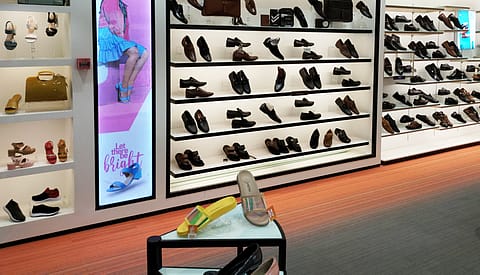India needs tariff reforms, R&D boost to increase share in global footwear industry: Niti Aayog
India's footwear industry faces challenges due to high tariffs and import reliance, as per the Niti Aayog report. The report advises tariff reforms and R&D investment to boost non-leather footwear production.

India remains competitive in processed leathers (over 10% share) and leather apparel, but has limited presence in footwear, especially non-leather and high-demand categories, according to a Trade Watch report by Niti Aayog. The report says global market leaders like China dominate mass footwear and travel goods, while Vietnam excels in textile- and leather-based footwear, and Italy leads in premium processed leather and apparel.
It identifies that India has a tariff disadvantage as it imposes 10% tariffs on key footwear inputs, while Vietnam and Italy have near-zero rates, giving Vietnam a cost advantage. In terms of challenges for India, the country's reliance on imports for sourcing, combined with higher duties, makes it less competitive than countries with lower tariffs, the report says. The country should boost its non-leather footwear production to tap into the $110 bn market (India is currently at just 1%) by incentivising domestic input production and reducing reliance on imports.
Global footwear demand grew steadily (2020–24), led by non-leather products (61% of total footwear exports, USD 110 bn of USD 179 bn). Despite positive export growth (4.6% CAGR), India’s share in global non-leather footwear exports is just 0.6%, far below China (38%) and Vietnam (20%). India’s share in global footwear imports is also negligible (0.4%) compared to China (3.8%) and Vietnam (1.6%), reflecting limited integration into global demand networks.
The report says the country should focus on R&D, design and branding by leveraging cluster-based R&D hubs, academia tie-ups for skilling, and branding push to raise India’s 1.4% global footwear share. It should also focus on cluster and infra modernisation by scaling the Tamil Nadu model, which exports 47% of leather, and by replicating it in Agra/Kanpur with plug-and-play parks to cut MSME sourcing costs (40% higher today).
The Niti Aayog report says the government should also push the UK FTA and EU entry to offset over 10% tariff disadvantage vs Vietnam and Italy, enabling deeper integration into global value chains. In its policy suggestions, the Niti Aayog report says there should be a focus on eco-leather and traceable tanning to meet EU compliance norms and move up value chains.
Notably, India's merchandise exports were $115 bn (-4% y-o-y) and imports $175 billion (1.8% y-o-y) in the quarter, while the services exports rose to $102 bn (14% y-o-y) while imports were $48 billion (4.2% y-o-y).
For FY25, India's total trade stood at $1.73 trillion, with exports at $823 billion and imports at $908 billion. The combined trade balance recorded a net deficit of $ 85 billion, the lowest across the four quarters. In Q4 FY25, India’s exports to the UAE, Netherlands, UK, China, and Singapore dipped, while exports to the USA saw a year-over-year growth of 27%. In Q4 FY25, imports from China, Russia, the UAE, the USA, Iraq, Saudi Arabia, and Singapore increased, led by gold from the UAE and electronics from China.